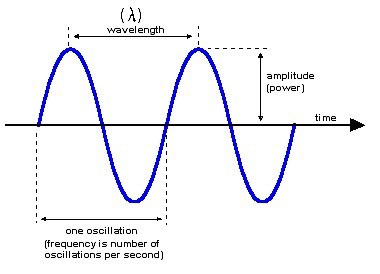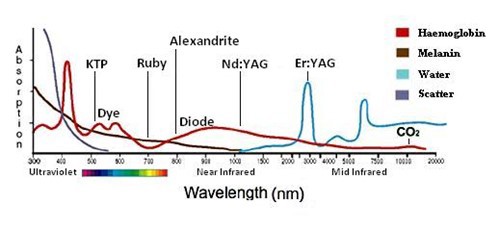Understanding lasers
Lasers are a complicated field in the world of aesthetics; here at the Laser Market, we are trying to make it a little easier for you to understand. It is only with such understanding that you can make informed decisions on your laser business and getting the best for your clients.
If you are still struggling to understand you can speak to us, the experts.
To understand lasers there are many things to consider; such as what is the:
Active laser medium – source of the optical gain within a laser.
Examples of these are
- Gas – Laser use a gas such as C02; often used in aesthetic procedures
- Solid State (Crystal) – Lasers like this consist of either a glass or a crystalline structure eg Erbium, Ruby and Alexandrite, Nd:YAG
- Liquid dye- These lasers use an organic dye as the medium. These dyes can cover a wide range of wavelength’s which makes them suitable for pulsed dye lasers
- Semi-conductors – These lasers are also in the solid state but are consider separate and an example of this is a Diode laser
Wavelengths (nm)
Target of the laser
Lasers that are used in Aesthetics can be ablative, non-ablative or fractional in their functionality.
There are also other technologies that can function similar to a laser in terms of how they treat conditions; these technologies include:
Intense Pulsed Light (find out about the difference between laser and IPL)
Radiofrequency (read about Radiofrequency on our sister site aesthetic market)
Cavitation (read about cavitation on our sister site aesthetic market)
Laser stands for Light Amplification by Stimulated Emission of Radiation. The laser generates light in the form of a high intensity beam. This beam of light is:
- Monochromatic – single wavelength
- Coherent – Waves are in the same phase
- Collimated – the beams of light are parallel to each other
The electromagnetic spectrum shows us the range of all the possible wavelength’s of the laser - by “wavelength” we are talking about the distance over which the wave of light repeats itself measured from peak to peak.

Some of the other terms often used when talking about lasers are
Frequency – Number of oscillations per second i.e. number of pulses fired by the laser (Hz)
Energy – Measured as “FLUENCE” which is a count of joules per centimeter squared (j/cm2. By controlling the Fluence, we control the amount of energy being delivered to the tissues.
Pulse width - This is the duration of the laser pulse. Measures in seconds with lasers ranging from pico-second pulse widths to several seconds.
Spot size – This is the size of the spot over which a pulse of laser is delivered and ranges from 1mm to 26mm.
It is a combination of the all above parameters that are changed depending on the skin type of the patient, the tissue being treated and the desired effect.
How targeting the laser is achieved
This describes the tissue being targeted rather than how the laser is aimed.
Lasers used in the aesthetic market are designed to target a particular chromophore within the tissue and these chromophores can be things like
- Melanin
- Haemoglobin
- Water
The wavelength of the laser will dictate what chromophore it can target with many lasers targeting more than one chromophore but are obviously better at some than others. The chromophore that the laser is targeting can also differ in its strength at different points ie different depths.
Example of this is the chromophore haemoglobin that is found in blood is best absorbed at a shallow wavelength. The chromophore water is bet absorbed at a deeper wavelength. Melanin is somewhere in the middle of water and haemoglobin.
Melanin and haemoglobin
Both of these chromophores work in a similar way in that they have colour and its this colour that is absorbed by the particular laser light. Laser such as these are usually used for treating conditions such as:
- Hair removal
- Vascular conditions
- Rosacea
- Skin discolouration
- Freckles
- Pigments
A lot is written about tanning skin been a contra-indication for lasers. Why is this? The darker the skin the more energy is absorbed by the laser so if you are treating tanned skin the energies would have to be altered accordingly. Using the same settings on dark skin as on light skin is very dangerous and can cause some serious burns. The thing to remember how this works is that if the chromophore has no colour then it is going to be difficult to target; i.e. blonde hairs, these have little colour so are difficult to target and thus difficult to treat.
Water chromophore
Water actually makes up 80% and in some case more of soft tissue. So lasers that target water as the chromophore are often used for resurfacing. So in this we are looking for lasers with deep wavelength’s like Erbium that is very strongly absorbed in water.
The graph below shows how particular chromophores are absorbed over different wavelengths.

Co2 lasers 10,600nm- This is a gas laser in the mid infra-red spectrum that is highly absorbed in water. Most useful in aesthetics for cutting and resurfacing
Erbium 2940nm- This is solid state laser that is highly absorbed in water and is used for laser resurfacing and skin rejuvenation
Nd:YAG 1064nm – This is absorbed by many chromophores and is consider the best all round laser wavelength. It is highly absorbed in haemoglobin so brilliant for the treatment of vascular conditions but also for the treatment of hair removal.
Diode laser 800-900nm- These laser are highly absorbed by melanin so used in hair removal
Alexandrite 755nm- This laser is highly absorbed by melanin again so again used for hair reduction
Ruby 694nm- A solid state laser highly absorbed by blue and black pigmented as well as melanin so very good for the use in tattoo removal and pigmentation
Pulsed dye 577nm -585nm – These lasers are absorbed by haemoglobin so used in vascular treatments and vascular staining such as port wine stains
KTP 532nm - This laser is a brilliant green light and is highly absorbed by haemoglobin so again is used for vascular and pigmentation.
Argon 488nm and 515nm – These lasers are less common both absorbed by both water and haemoglobin so again could be used for a wide variety of treatments and conditions
It is the laser companies that produce the laser systems that look at the interaction of tissues with different strengths of laser and at different depths making some lasers more application friendly that others. This generally means more research and development has been put into the lasers and is from a manufacturer you can trust.
Ablative laser, fractional laser and non-ablative lasers
Non-ablative lasers – These lasers heat the skin without removing epidermis examples are Nd:YAG lasers.
Ablative lasers – These procedures remove the epidermis such as erbium and Co2 and are used for resurfacing.
Fractional lasers - These can be either non-ablative or ablative and target a fractional of skin leaving the rest intact. Brilliant for less aggressive procedures with less downtime like fractional resurfacing.
The details given above are only some of the basic facts of lasers, but will hopefully help you understand what lasers do and how they work.
